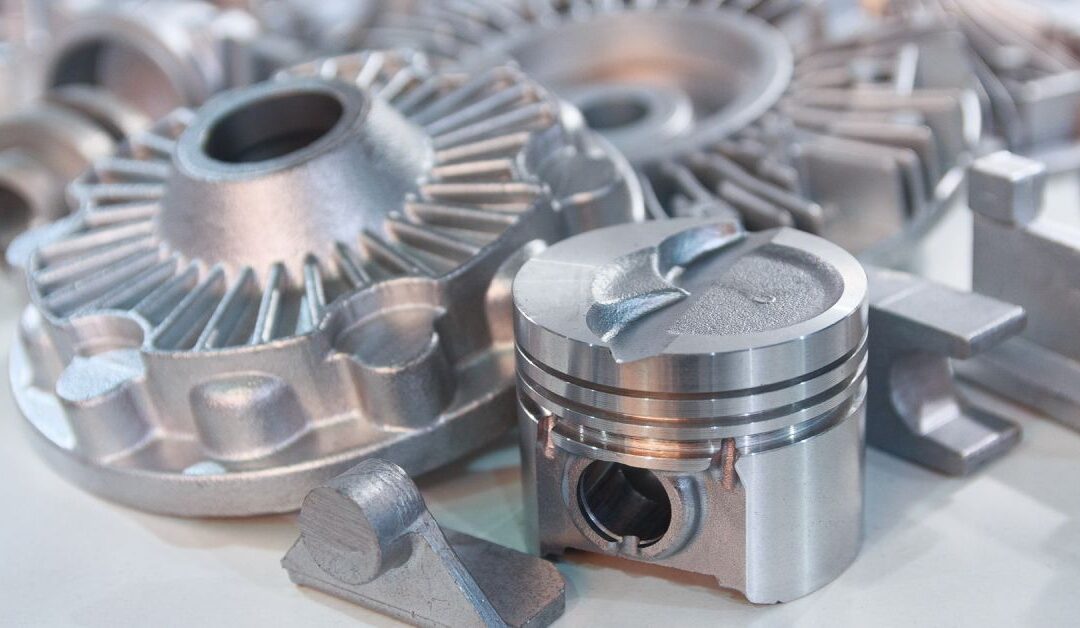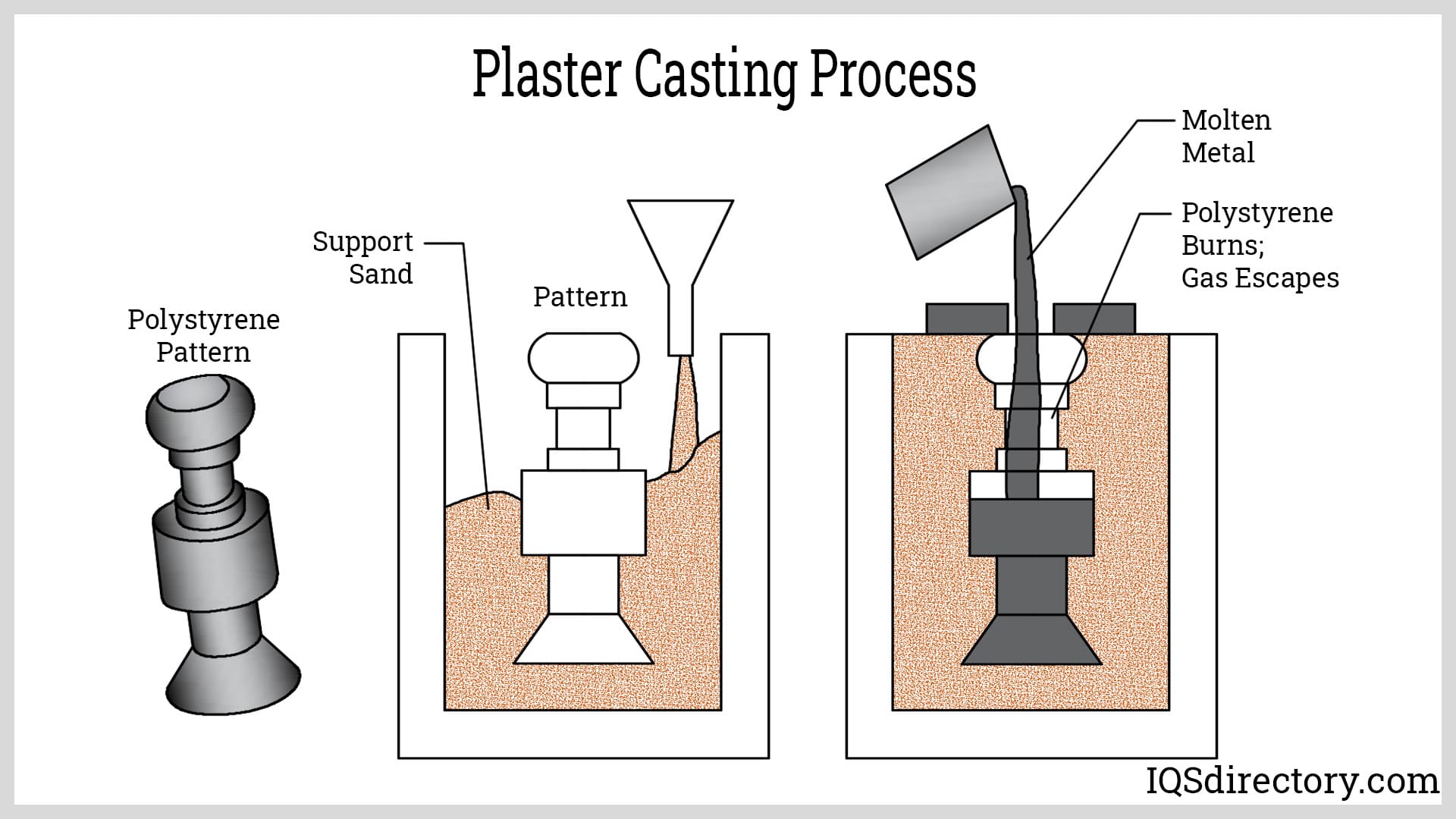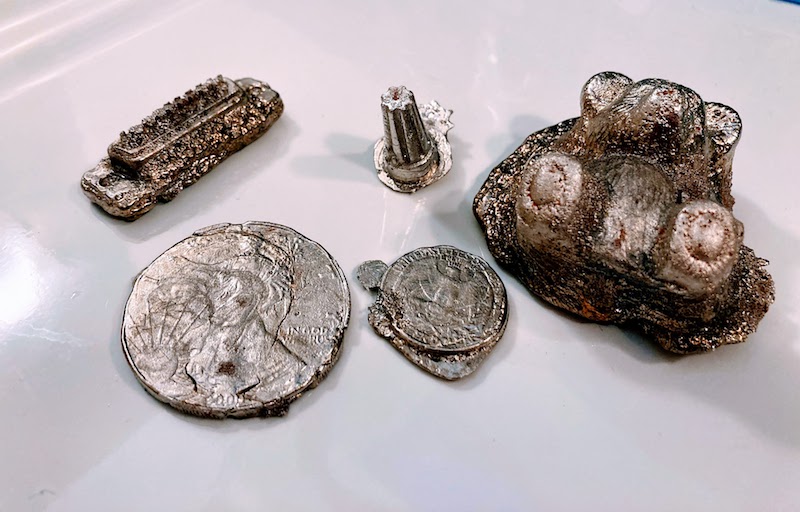Recognizing the Steel Castings Refine: A Comprehensive Guide for Beginners
The Metal Casting process is an essential method in making that changes molten metal right into solid forms. Newbies need to understand the different approaches entailed, such as sand spreading and die spreading. Recognizing the materials, design principles, and safety and security actions is similarly essential. Each aspect plays a vital function in attaining effective end results. As one browses these complexities, the inquiry of exactly how to maximize each step for improved outcomes ends up being progressively essential.
The Fundamentals of Steel Casting
Metal Casting has evolved over centuries, its fundamental principles continue to be integral and constant to the production procedure. At its core, Metal Casting involves the change of liquified steel into solid items with different techniques. The process begins with the development of a mold and mildew, which defines the shape of the final item. As soon as the mold is prepared, steel is warmed to its melting factor and poured into the cavity. After cooling, the steel solidifies, taking the form of the mold.
There are several casting methods, consisting of sand spreading, investment casting, and die casting, each with one-of-a-kind benefits and applications. The selection of strategy relies on elements such as production volume, material kind, and desired accuracy. As soon as cast, the last item might go through additional processes like machining or surface area treatment to attain the required surface and specs. Recognizing these fundamentals is important for anybody thinking about the field of Metal Casting.

Understanding Products Used in Steel Casting
Materials play an essential function in the Metal Casting procedure, affecting the end product's homes and efficiency. Various steels are used, including light weight aluminum, iron, bronze, and steel, each offering distinctive characteristics fit for certain applications. Light weight aluminum is corrosion-resistant and light-weight, making it perfect for auto parts. Iron, especially cast iron, is favored for its exceptional wear resistance and resilience. Steel supplies high toughness and flexibility, often utilized in heavy machinery elements. Bronze, known for its corrosion resistance and machinability, is typically utilized in marine applications.
Along with the steels, numerous casting products, such as sand, plaster, and ceramic, are used to produce mold and mildews. Sand casting, the most common technique, utilizes silica sand due to its thermal security and ability to develop intricate shapes. Plaster and ceramic mold and mildews offer better information yet might require more complicated procedures. The option of materials straight impacts the effectiveness, cost, and quality of the casting operation.
The Style Process: From Concept to Blueprint
The style process in Metal Casting begins with the preliminary idea advancement, where concepts are created and evaluated. This is adhered to by the application of CAD modeling techniques, permitting precise visualizations of the layout. Finally, the plan completion steps assure that all specs are accurately recorded for production.
Initial Principle Development
First idea growth marks a critical stage in the Metal Casting procedure, where ideas change into tangible layouts. During this stage, designers work together with engineers and stakeholders to brainstorm and fine-tune first principles. They take into consideration variables such as functionality, aesthetics, and manufacturability, guaranteeing that the layout fulfills the required specifications and efficiency requirements. Illustrations and rough drafts are produced to visualize the principles, enabling for initial assessments of expediency and cost-effectiveness. This phase also involves determining products and potential casting approaches that straighten with the design objectives. Eventually, first concept advancement lays the foundation for a complete blueprint, guiding the succeeding stages of the casting procedure and making sure a successful shift from idea to fact.
CAD Modeling Techniques
Changing concepts right into specific layouts, CAD modeling techniques play an essential duty in the Metal Casting procedure. These techniques make use of sophisticated software program to produce comprehensive three-dimensional designs that precisely mirror the desired product. By employing tools such as parametric modeling, solid modeling, and surface modeling, designers can control dimensions and shapes with simplicity. CAD systems also promote simulation and evaluation, permitting the identification of possible flaws prior to manufacturing begins. This aggressive strategy lowers product waste and maximizes the design for manufacturability. Furthermore, CAD designs can be quickly customized, enabling quick versions based on feedback. Fundamentally, CAD modeling acts as the foundation of the layout procedure, connecting the space between first principles and the ultimate production-ready styles.
Plan Completion Tips
Adhering to the production of detailed CAD designs, the next stage includes blueprint completion, which is crucial in translating electronic designs into actionable prepare for production. This procedure begins with evaluating the CAD designs for accuracy and conformity with requirements. When confirmed, the measurements, resistances, and material specs are thoroughly outlined to guarantee clarity. Incorporating notes and notes aids interact essential info relating to casting procedures, surface area coatings, and assembly needs. The settled plan undergoes an extensive approval procedure, typically involving partnership with designers and production groups to address any type of possible concerns. Modifications are made and approvals obtained, the blueprint is officially released, offering as the fundamental file for the succeeding phases of Metal Casting, consisting of pattern production and mold and mildew style.
The Metal Casting Techniques Described

Metal Casting techniques incorporate a range of methods utilized to shape liquified metal into wanted kinds. These techniques differ according to the sort of product, intricacy of the design, and manufacturing quantity. Sand casting is among the most common approaches, involving the creation of a mold and mildew from sand to hold the liquified metal. Financial investment spreading, or lost-wax spreading, enables intricate layouts by utilizing a wax pattern that is disappeared. Die casting uses high-pressure injection of liquified steel into a mold, suitable for mass production. Various other approaches include long-term mold and mildew spreading, which uses multiple-use mold and mildews, and centrifugal spreading, where rotational forces help in filling up the mold. Each technique has its advantages and applications, making it important for producers to pick the appropriate technique based upon their particular needs and needs. Comprehending these methods is vital for anyone involved in the Metal Casting procedure.
Finishing Procedures: Enhancing Your Casted Product

Completing processes play an essential duty in improving the quality and look of casted items. Various surface treatment techniques, such as polishing and finish, are used to boost longevity and looks. Additionally, Going Here high quality inspection techniques guarantee that the end product satisfies specified requirements and performance demands.
Surface Treatment Strategies
A range of surface area treatment strategies play a necessary role in boosting the quality and durability of casted products. These strategies consist of approaches such as shot blasting, polishing, and coating. Shot blasting effectively gets rid of surface flaws, improving the visual and practical attributes of the casting. Polishing offers a smooth surface, which is specifically important for ornamental applications and parts requiring very little rubbing. Finish techniques, such as electroplating or powder coating, offer additional protection versus corrosion and wear, guaranteeing durability. Surface area treatments can boost bond for succeeding processes, such as paint or bonding. By utilizing these techniques, makers can attain premium surface area high quality, which is critical for the performance and lifespan of Metal Casting in various applications.
Quality Evaluation Techniques
Effective quality evaluation methods are important for guaranteeing the honesty and efficiency Full Report of casted products after the ending up procedures. Different techniques are utilized to analyze the quality of Metal Casting, consisting of aesthetic inspection, dimensional checks, and non-destructive screening (NDT) Aesthetic examination enables the identification of surface area issues, while dimensional checks guarantee that products fulfill specified resistances. NDT techniques, such as ultrasonic testing and radiographic evaluation, offer much deeper understandings right into interior stability without harming the castings. Furthermore, mechanical screening, such as tensile and solidity examinations, evaluates material buildings - Aluminum Castings. By utilizing a combination of these approaches, makers can enhance item high quality and reliability, inevitably resulting in greater consumer fulfillment and minimized production costs
Safety Considerations in Metal Casting
While the Metal Casting process offers numerous advantages, it likewise offers an array of security hazards that must be thoroughly managed. Workers in casting centers are revealed to high temperature levels, liquified steels, and harmful materials, which can lead to severe injuries if correct preventative measures are not taken. Individual safety devices (PPE) such as heat-resistant gloves, encounter guards, and protective garments is important to lessen threats.
Furthermore, the existence of fumes and dust requires appropriate air flow systems to assure air top quality - Aluminum Castings. Routine training on security procedures is important for all workers to identify prospective threats and react efficiently. Emergency situation treatments ought to be developed, consisting of fire precaution and initial aid schedule. Upkeep of equipment and proper handling of materials even more add to a safer working setting. By prioritizing these safety and security factors to consider, Metal Casting procedures can protect their labor force and maintain efficient manufacturing procedures
Regularly Asked Inquiries
What Are the Ecological Influences of Metal Casting?
Metal Casting can bring about ecological influences such as air and water air pollution, source deficiency, and power intake. Furthermore, inappropriate waste management and exhausts from foundries contribute to eco-friendly disruptions and health and wellness dangers for close-by communities.
How Do I Select the Right Steel for Casting?
To select the right metal for casting, one must consider variables such as mechanical homes, rust resistance, thermal conductivity, and cost. Evaluating the desired application and ecological conditions is vital for suitable selection.
What Are the Usual Flaws in Metal Casting?
Usual defects in Metal Casting consist of porosity, contraction, sand incorporation, and misruns. These concerns commonly develop from incorrect product selection, insufficient design, or defects in the spreading procedure, influencing the end product's top quality and performance.
How Can I Enhance My Steel Casting Skills?
To improve Metal Casting skills, one must practice consistently, research more helpful hints study casting methods, evaluate previous tasks for defects, seek responses from experienced casters, and continually trying out different products and approaches to boost effectiveness and understanding.
What Is the Expense of Starting a Metal Casting Business?
Beginning a metal casting service commonly requires a first financial investment of $5,000 to $50,000, depending upon equipment, materials, and facility prices. Elements like area and range can substantially influence overall startup expenditures.
The Metal Casting procedure is a fundamental method in making that transforms molten steel right into solid types. Beginners must grasp the numerous approaches included, such as sand casting and die casting. There are numerous casting methods, consisting of sand spreading, financial investment casting, and die spreading, each with distinct advantages and applications. Financial investment spreading, or lost-wax casting, permits for detailed layouts by utilizing a wax pattern that is melted away. Various other techniques consist of irreversible mold casting, which utilizes multiple-use mold and mildews, and centrifugal casting, where rotational pressures help in filling the mold and mildew.